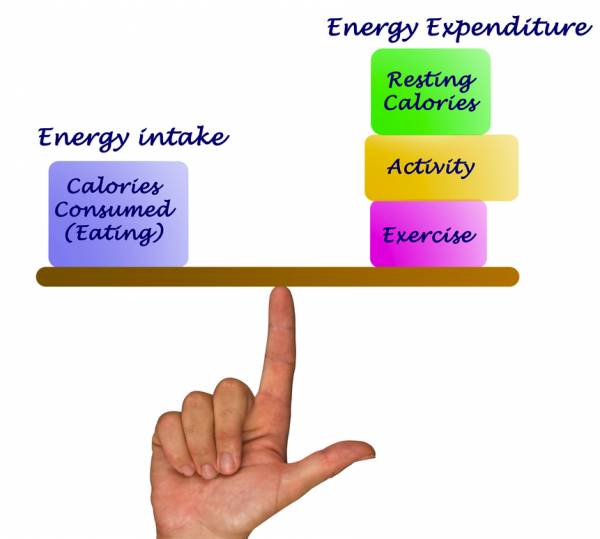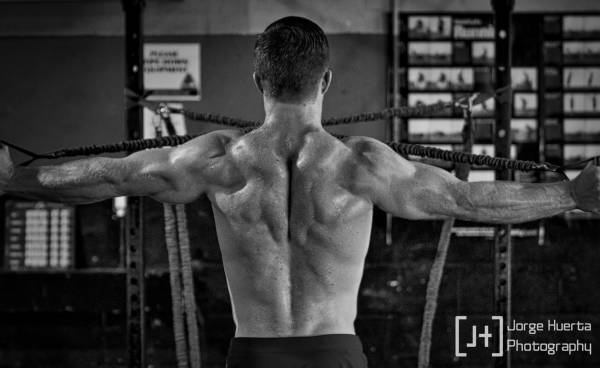Is it possible to gain muscle while doing CrossFit? The easy answer to that is yes, it is. How could it not be? Training with weights using high intensity and focusing on heavy barbell movements like CrossFit prescribes? But the real question people want to know is can you look like a bodybuilder while training CrossFit?
Hypertrophy and CrossFit Are Not Enemies
People watch the CrossFit Games on ESPN and see both the men and women looking jacked. Rich Froning, Jason Khalipa, Sam Briggs, the list goes on. All of them look like amateur-level physique competitors.
People want to make things out to be black and white. The notion is you can train for aesthetics, strength, or function discretely – and that is just not true. In fact, they can all complement each other perfectly. In my opinion, if you are spending a good amount of time in the gym, you should at least look like you lift.
Before the haters start flooding my email inbox, if your only goal is to compete in a bodybuilding or physique show a traditional periodized hypertrophy program is still going to be your best bet. But for those of you who want to look like you lift and perform like an athlete, this is how it’s done.
Part 1: Nutrition
The most important part of building muscle and looking like a bodybuilder with CrossFit training is nutrition. For this article’s purpose, we are going to focus on gaining muscle. In my opinion, that is the biggest obstacle for the person who wants to be an aesthetic CrossFitter.
If you want to build muscle, then you need to be in a caloric surplus. What I am about to say may be a little unpopular in the CrossFit community, but that’s okay. The paleo diet is not the best approach for a CrossFit athlete who also wants to focus on building muscle (or even one who wants to perform the best, but that’s a separate article). Getting the majority of your calories from protein and fat is not going be enough for building muscle.
So, your first step is to find out how many calories your body needs to maintain its current weight and go from there. Remember, at the end of the day, calories in versus calories out is what is going to determine your body composition. If you want to build muscle, then you are going to need to eat big. To find our maintenance caloric intake we need to first figure out our basal metabolic rate (BMR).
BMR is the total amount of energy (calories) your body requires just to maintain normal daily functions, including digestion, circulation, respiration, temperature regulation, cell construction, and every other process in your body. BMR is the total of all the energy you use for basic bodily functions at rest. This does not include physical activity, so it’s not that applicable to our everyday lives but, it’s a starting point.

How to Find Your BMR and Maintenance Calories
There are a hundred different formulas to determine BMR, but I have found through field observation that just multiplying by the numbers below produces results within 5% of any formula. I favor simplicity.
- Men: BMR = (body weight in pounds x 8-10)
- Women: BMR = (body weight in pounds x 7-9)
The next step is to multiply by an activity multiplier. This will take into account your daily activity to determine your maintenance calories, which is what we are looking for. Again there are many forms of activity multipliers, but this is what we have found to work best at my gym.
Activity Factor Multiplier:
- BMR x 1.3-1.4: Lightly Active (active a few days a week, exercise 1-3 days)
- BMR x 1.5-1.6: Moderately Active (where most people are at, train 3-5 days a week and active lifestyle)
- BMR x 1.7-1.8: Very Active (training hard for a specific sport or purpose 5-6 hours a week, could be a hard labor job as well)
- BMR x 1.9-2.2: Extremely Active (endurance training or hard charging athlete who spends 10 or more hours training a week and/or lots of activity outside of training, can even require more calories than this depending on metabolic capacity)
Now we simply take that number and add calories to create a caloric surplus. Start small with the surplus and go from there. Add between 250-500 calories and see how your body responds. If you are not gaining any weight or a small amount (~under ½ pound a week) add more calories, if you are gaining too much weight (~more than 2 pounds a week) decrease calories.
Here is how I recommend dividing up your caloric intake into macronutrients:
- Protein: Eat between .8g-1.2g of protein per pound of body weight. For more information on protein intake check out my article here.
- Fat: Eat between 20-35% of overall calorie intake from fat. The total will depend on how many carbohydrates you prefer.
- Carbs: Fill the rest of your calories in with carbohydrates. Make sure you are getting between 25-45g of fiber a day.

Part 2: Training
Training to be functionally fit and muscular seems a lot more difficult than it is. For the CrossFit athlete who wants to focus on muscle, aerobic conditioning will need to go on the backburner for a while. The days of doing four or five metcons a week and running three miles a day are over – for now.
You can focus on building muscle for a specific period of time and then go back to a more balanced program later, but with added muscle. If this is starting to sound a lot like periodization, don’t freak out. Periodization is just a fancy word for planning. Right now we are going to plan to build muscle while maintaining other aspects of your fitness.
Building muscle is going to require a few changes from a typical CrossFit training regimen:
- Shorter Metcons: When the goal is muscle, you will want to favor shorter duration training with higher intensity. Anything longer than fifteen minutes is going to be working against the goal. You can still metcon to maintain conditioning, just keep it brief.
- Incorporate Programming: Random training is going to have to be limited. Jump on a strength-training program. It doesn’t matter which one as long as it is progressive.
- Add Some Assistance Work: The best program for hypertrophy goals will be built around basic compound movements with accessory work in a varied multi-planar, multi-angled fashion to ensure maximal stimulation of all muscle fibers.
Conclusion
Building muscle with CrossFit training might not be as hard as originally thought. Skip the paleo diet and start eating like you want to build muscle. Add in more strength work and limit long conditioning sessions. With a few small changes to your nutrition and training, you will be on your way to looking jacked in no time.
Photo 1 and sidebar image courtesy of CrossFit, Inc.
Photo 2 courtesy of Shutterstock.
Photo 3 courtesy of Jorge Huerta Photography.






